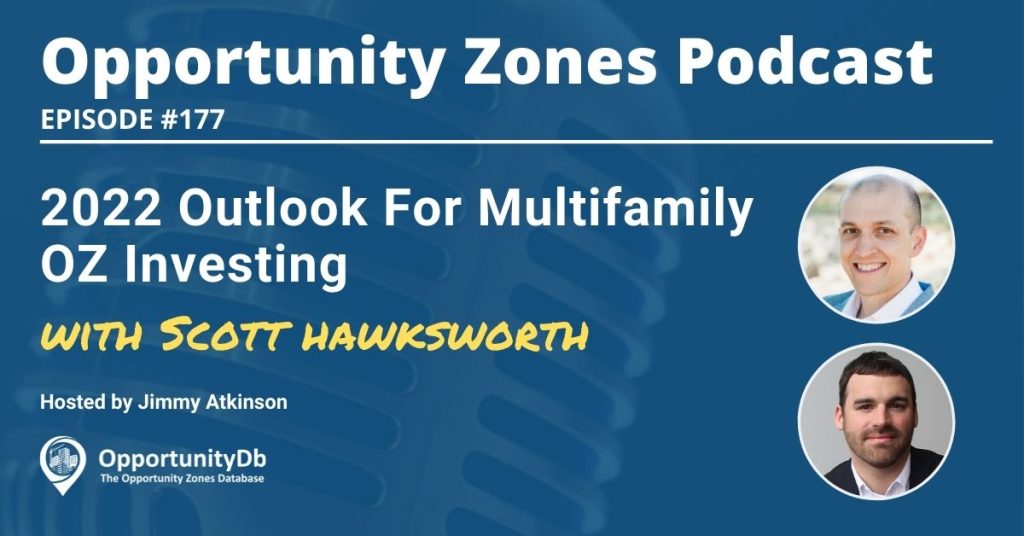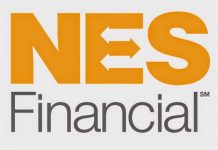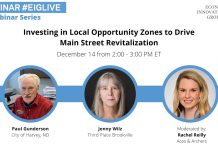There are many Qualified Opportunity Funds that encompass multifamily real estate and are well worth any investor’s consideration. Investing in multifamily property offers a wide variety of advantages for investors, such as leverage, cash flow, equity growth, and, tax savings. So what’s the forecast for these golden investment opportunities in 2022?
Scott Hawksworth is a co-founder of MultifamilyInvestor.com and an entrepreneur based in Chicago. MultifamilyInvestor.com covers trends and opportunities in multifamily real estate investing and helps High Net Worth investors, family offices, RIAs and financial advisors, and industry service providers navigate the ins and outs of the multifamily landscape.
Click the play button above to listen to our conversation with Scott.
Episode Highlights
- Financial features of a multifamily real estate investment.
- How do Opportunity Zones offer multifamily investing in tax-beneficial ways.
- What is the location criteria for investing in multifamily real estate and what are other considerations when searching for multifamily properties.
- What the future holds for multifamily investments in Opportunity Zones.
- What are the different forms multifamily real estate comes in.
- How can investors access institutional-quality real estate in the multifamily sector.

Featured On This Episode
Industry Spotlight: MultifamilyInvestor.com
MultifamilyInvestor.com covers trends and opportunities in multifamily real estate investing and helps High Net Worth investors, family offices, RIAs & financial advisors, and industry service providers navigate the ins and outs of the multifamily landscape.
Learn More About MultifamilyInvestor.com
- MultifamilyInvestor.com
- MultifamilyInvestor.com on LinkedIn
About The Opportunity Zones Podcast
Hosted by OpportunityDb.com founder Jimmy Atkinson, The Opportunity Zones Podcast features guest interviews from fund managers, advisors, policymakers, tax professionals, and other foremost experts in opportunity zones.
Show Transcript
Jimmy: Welcome to The Opportunity Zones Podcast. I’m your host, Jimmy Atkinson. Multi-family residential real estate is the single most popular asset class for qualified opportunity funds and investors in opportunity zones. Novogradac estimates that $15.56 billion out of the $20.28 billion that they’re tracking, or more than 75% of the funds that they’re tracking, have at least some component of residential development. Here to join us today to discuss multi-family as it pertains to opportunity zones but also overall multi-family sector is Scott Hawksworth. Scott is co-founder of MultiFamilyInvestor.com, a property that I am co-owner in, and he joins us today from Chicago, Illinois. Scott, how are you doing, buddy? Welcome to the podcast.
Scott: Thanks for having me, Jimmy. I’m doing great, how are you?
Jimmy: Good. I’m doing very well, Scott. Always a pleasure to speak with you. We’ve known each other for quite some time, and I’m excited about the new property that we’re building together, MultiFamilyInvestor.com. So, we’ll talk a little bit more about that toward the end of the episode today, but first, let’s talk about multi-family real estate in general. And for most of our listeners, I’d imagine you’re kind of preaching to the choir here. I think a lot of people who listen to The Opportunity Zones Podcast probably have quite a bit of familiarity with real estate investing, and in particular multi-family real estate investing. Certainly, there’s some listeners who do not, but I would guess that the majority have some familiarity, but anyway, let’s talk about multi-family a little bit here. And why don’t you give us, Scott, your case for multi-family and why you think it’s a good investment?
Scott: Absolutely. So, I mean, you said it at the top, there’s clearly tons of interest in multi-family, specifically as it pertains to opportunity zones, some big numbers you mentioned there. But for me, you know, even looking outside of just in opportunity zones, multi-family investments I just find to be so exciting for a number of reasons. The first is just that opportunity for an attractive total return. And, you know, and this return includes ongoing cash flow and, of course, the potential for multiple liquidity events, which is always exciting. And then when you just kind of look at real estate itself, and you look at multi-family, you get this exposure to residential real estate, and we’re in a time where there are housing shortages across the United States, and that’s not changing anytime soon. There’s a little factoid I like to share here, construction of new housing in the past 20 years fell 5.5 million units short of long-term historical levels. This is according to the National Association of Realtors report. So, what that means is we are in this period of housing shortage where people need homes, and we’re just not building enough to meet demand, and that creates opportunity.
And then the third thing I always like to mention is that specifically when you’re looking at real estate, multi-family has proven to be the property sector that is most resilient to recessions, and that is according to a CBRE study. So, I know there’s so many people out there that 2008 is still on the mind and maybe they’re on the fence about it, but when you’re looking at resiliency, I think that’s really exciting. And then the other things I would add would be significant tax advantages. And I know, Jimmy, you would have a lot to say about that specifically when we’re talking about opportunity zones. And then, they can even function as a potential inflationary hedge as real estate asset appreciation can outpace inflation. So, those are kind of my why of multi-family investments.
Jimmy: No, I think that’s great, Scott. Yeah, I’ve always described multi-family as a very resilient and durable asset class. It’s the most essential real estate property type. You can do without retail, probably, you can do without hotel and hospitality, as we’ve seen through the pandemic, especially at the beginning of it, but you need a roof over your head. You need residential real estate and multi-family adds that density component that is much-needed throughout this country, as you mentioned, the housing crisis that we’re facing all over the country, and in particular certain areas of the country are hit worse than others.
I want to lock in on the tax benefits though because I’m a tax benefits guy, I started The Opportunity Zones Podcast and I’m a big OZ guy, so just to quickly review the OZ benefits for a qualified opportunity fund that invests in any type of asset, whether it’s multi-family real estate, or other real estate, or operating business, or maybe something else. Two big tax benefits now that we’re out of 2021, the 10% basis step-up benefit has expired, but still, two huge benefits are outstanding. One is a deferral of capital gains until the end of 2026, and two, as long as you hold the Opportunity Zone investment for at least 10 years, you get to eliminate capital gains tax liability on your opportunity zone appreciation, which I refer to it as probably the greatest tax incentive ever created. So, that’s the qualified opportunity fund wrapper, of course, and its tax benefits, which my listener are no stranger to. But, Scott, are there other tax benefits to owning multi-family residential real estate, or are there other wrappers similar to qualified opportunity funds that you can package multi-family properties into? Give us the lay of the land in terms of tax benefits as you see it.
Scott: Sure. Well, in terms of tax benefits, if you are a direct owner, and even if you’re an investor, of course, there’s depreciation that multi-family investments provide, which is nice to do that.
Jimmy: No, I’m glad you brought up depreciation. Sorry to interject. Because I forgot the hidden benefit of opportunity zone investing, which is…I’m up on my opportunity zone soapbox now. I love this wrapper, of course, Scott, you know that. Depreciation is fantastic until you go to sell a property, right, because that depreciation gets recaptured. But that is not the case with opportunity zones. Depreciation recapture is eliminated for opportunity zone investors, which is another benefit that doesn’t get talked about a lot, and I, frankly, almost forgot to talk about it until you mentioned it. But, anyway, go on, Scott, continue, please.
Advertisement
Scott: So, depreciation, and then, of course, if you are the direct owner of a multi-family property, you get those nice direct expense write-offs that you can take there. But then you were talking about wrappers, and there’s another wrapper here, the Delaware Statutory Trust, or the DST, which for those unfamiliar is an investment vehicle that’s organized as a trust that generates this passive income from real estate, and it allows investors to see the same capital gains tax benefits that they would get from a 1031 exchange without actually having to actively manage that replacement property. So, that’s really attractive for folks who maybe don’t want to go through all of the hoops to directly manage a property, which can come with some challenges. You can still see some tax benefits there.
Jimmy: Yeah, if you’ve been a 1031 investor and you need to 1031 out of a property but you’re kinda tired of the active management part of being a real estate property owner, you want to get away from the three Ts, right? Toilets, trash, and tenants, right, Scott?
Scott: Mm-hmm.
Jimmy: You can make this passive investment into a Delaware Statutory Trust, DST, yeah. That’s another great wrapper that I like as well. Not as much as opportunity zones, but it’s a good one, I’ll admit. Not for everyone, you have to be a 1031 investor, but if you are, it’s definitely worth looking into. What about some trends, Scott? Let’s move away from tax benefits for a minute. Let’s talk about trends that you see in the multi-family sector and your outlook for the rest of the year. 2022 has just kicked off. Where do you see this year and beyond taking the multi-family real estate asset class?
Scott: Sure. The overall outlook is very, very good. I’m so excited for it, and so many multi-family investors are excited because this housing shortage that I alluded to earlier is not going away, and in fact, it’s impossible to fix in the short term. We just can’t build enough homes to meet that demand. I have another statistic here. On average, the U.S. built 276,000 fewer homes per year than between 2001 and 2020 compared to the period between 1968 and 2000. So, we’re actually getting worse with it. So, again, that creates opportunity. So, look to the housing shortages to continue to exist.
And then when you look at that, you have to also look at population migration. And this is gonna continue to be really, really big in the multi-family space. When you’re looking at where are people moving? Over the past year and anything before that, we’ve had a lot of regions in the country that are benefiting from significant population influxes in really a variety of ways, and real estate has been part of that. So, there’s so much activity happening in the Southwest specifically as people look for warmer climates, maybe areas where there’s, you know, more friendly to business or lower taxes and these types of benefits. So, when you’re looking at trends and outlook on multi-family, a lot of these areas are seeing lots of builds, a lot of investment activity, and then these multi-family properties are filling up really quickly, and that, again, creates a lot of opportunity.
I’ve got another statistic for you here. So, there are low-vacancy rates in a lot of desirable locations that are across the United States. So, as of 2020, 9.7% of housing was vacant, which was down almost 2% from 2010. So, what that means is that there are actually these desirable areas where there are vacancies, so then there’s going to be prices rising. So, that’s really interesting there. Then you have metro-area growth. We’re looking, as I mentioned, we’re talking maybe Southwest, you’re looking at sort of Phoenix, cities like that. Lots of metro-area growth, which, again, creates more demand for housing, jobs, all of that, which kind of affects it.
And I want to talk about COVID-19 a little bit because this is really upended a lot of things, and it’s kind of shifted things. You know, even now, a lot of offices are allowing more work from home, they’re going remote again. This has really changed a lot about the way people are even thinking about their homes because they’re spending more time at home, their homes are needed to serve not only as a place where they can live but as a place where they can work. In fact, I’ve got a little statistic here on that. So, more people than ever before are working from home, and this recent industry report predicts that 36.2 million workers, or 22% of Americans, will be working remotely by the year 2025, and that is an 87% increase from before COVID-19. So, what that means is that, again, more people are reevaluating where they’re living. They’re wanting more space, they’re wanting nicer space. If I’ve got to sit at home and work eight hours, you know, you kinda look at your four walls and think, “Can these be nicer?” You know? “It sounds a little loud here, I can hear the kids in the next room. Can I get something…?”
Jimmy: Yeah, it makes multi-family even more essential, really. Or residential…
Scott: Exactly.
Jimmy: …as a larger asset class group more essential.
Scott: Exactly, exactly. So, I think that’s a really…when we’re talking about trends and outlook, that just is not showing signs of slowing down, and many people have really started to embrace the work-from-home lifestyle, and they like it, and they don’t want to give it up. So, I think what that means is residential real estate, and specifically multi-family, especially when you’re looking at population centers, places where there’s a lot of jobs and business activity, that’s gonna continue to increase and be a factor. And then also, I think that it’s created a lot more flexibility and movement, kind of tying back to that migration I was talking about. So, now there’s folks that can have…maybe they can have a Chicago-based job, but they only have to fly there a few times a year, and now they’re looking, “You know what? I want to go to a sunny place. I want to go to Arizona.” I keep hitting on the Southwest, but that, again, creates opportunity there.
And then the last piece, and I alluded to it before, is this is sort of inflationary landscape protection. We’ll talk about some of the episodes that I’ve had in a bit here, but when you look at consumer price inflation in the U.S., just an example here, it was 13.5% in 1979, which was the worst year since 1947, and dividend income from REITs traded through the stock exchange averaged 21.2% that year, and total returns amounted to 24.4%. Just throwing a bunch of numbers here, but the point is is that it can…real estate, and specifically multi-family, can help act as that sort of hedge with inflation. So, those are kinda the trends and the outlook and where things are gonna continue to go as we look to 2022 because I don’t see any of this slowing down. I see this activity only increasing, and I know, Jimmy, you can speak to the opportunity zones side of things and what’s happening there, of course.
Jimmy: Yeah, as I will throughout the course of the year and in the years to come as well. But, yeah, like I mentioned at the beginning and you did as well, Scott, this is a resilient, durable asset class. That’s why we like it so much. What about cap rate compression? We had a lot of cap rate compression in 2021, you know, what effect did that have on multi-family real estate investors, and are you expecting more of the same in 2022?
Scott: Yeah, the surprising thing is there’s been this cap rate compression, but it really is not slowing investors down. Yeah, you’ve got to pay a little more to get in, but kind of tying back to what you were saying, Jimmy, it’s resilient, and investors are looking for safe investments that can offer opportunities for greater return and they’re not shying away. They’re saying, “Well, this is what it’s gotta be.” We’ve had also some trends in terms of new builds. You know, it’s a bit more difficult to get materials and things for builds, but again, that’s not slowing down the activity because I think you just look at, yes, okay, we’ve got inflation, we’ve got prices going up, but that main aspect of the housing shortages, and the fact that no matter what the environment is, people need homes, is really not deterring investors. I don’t anticipate that will change over the next year.
Jimmy: Yeah, and with bonds and treasuries where they are, you know, probably I would say the next best alternative to get income, current income, is real estate. And I think that helps push up those prices and those values in not just the multi-family sector, but across the real estate asset class, but particularly the multi-family sector for some of the reasons we discussed. Right, Scott?
Scott: Yeah.
Jimmy: Well, let’s pivot now and tell us a little bit more about your story, Scott, and about MultiFamilyInvestor.com, which, you know, I disclosed in the beginning, I’m a co-owner in that property, you’re a business partner in that property, Scott. Give us the story behind that.
Scott: Yeah. So, obviously, I’ve worked with you for a number of years, and if you can’t tell, I’m a bit of a multi-family evangelist. I really do think that investor portfolios can benefit so much from really significant allocation to multi-family. And I’ve had a lot of experience over my career in hosting podcasts and really interviewing experts about a wide variety of topics. Most recently I’ve been the host of “PayPod,” which is a payments and FinTech podcast about financial technology. And I looked at the multi-family sector, and Jimmy, you and I had conversations, and I just realized what an opportunity it was, and I was excited to start a podcast, and a video podcast nonetheless, where I could really speak to folks making this industry run and doing exciting things in the multi-family world. And so, that kind of was the impetus for co-founding this with you, of course.
Jimmy: Good. Well, Scott, it’s been a pleasure catching up with you and learning a little bit more about multi-family and chatting multi-family with you, but before we go, where can our listeners go to learn more about you and MultiFamilyInvestor.com and the multi-family investor podcast?
Scott: Sure. So, MultiFamilyInvestor.com, you can go there. We have all of our show notes posted up there. We’re available on all the major podcasting platforms, of course, and it is a video podcast, so we do have a YouTube channel, and we’re gonna continue to release videos as companions to our podcast. And we’ve got some exciting episodes coming up where we’re gonna be talking all kinds of multi-family topics. We’re gonna talk about workforce housing, we’re gonna be talking to sponsors who are developing properties in some of those exciting up-and-coming and growth areas. And then we have a backlog of episodes, which have been fantastic. We’ve talked about tax lien investing in multi-family, we’ve talked about the macroeconomic case for multi-family covering that inflationary landscape that I was talking about earlier. And, of course, Jimmy, fans of you, if they want to hear more from Jimmy, you were on a couple episodes where we talked opportunity zones in multi-family. So, there’s a lot to cover there, and it’s all at MultiFamilyInvestor.com.
Jimmy: Fantastic. Yeah, and I was a guest on Scott’s podcast once, or actually maybe twice now, and I know you’ve got some qualified opportunity funds sponsors stepping up in the coming days and weeks that are gonna fill in and be guests on your show as well, Scott. So, yeah, if you like what we’re doing here at The Opportunity Zones Podcast, I think you’re really gonna like what Scott’s doing at MultiFamilyInvestor.com. Please go check him out. And for listeners of this podcast, as always, I will have show notes on the Opportunity Zones Database website. You can find those show notes at OpportunityDB.com/podcast, and there you’ll find links to all of the resources that Scott and I discussed on today’s show. And, of course, I’ll be sure to link to MultiFamilyInvestor.com as well as his YouTube channel. Scott, it’s been a pleasure, buddy. Talk to you soon.
Scott: Talk to you soon. Thanks, Jimmy.









































